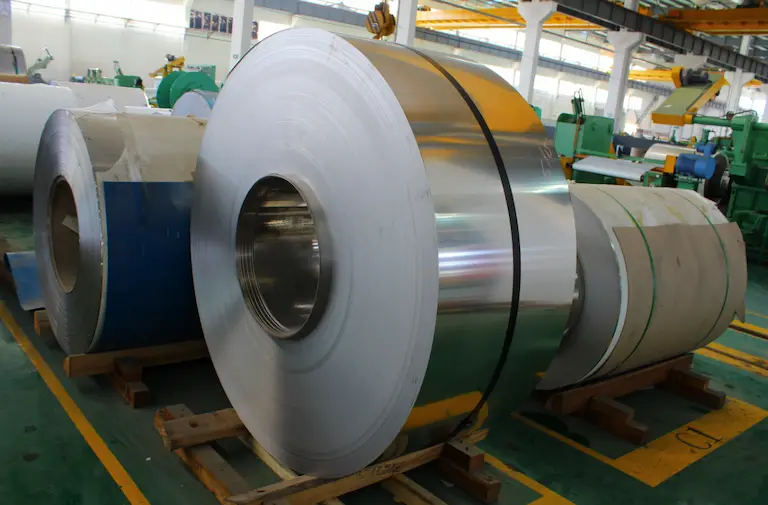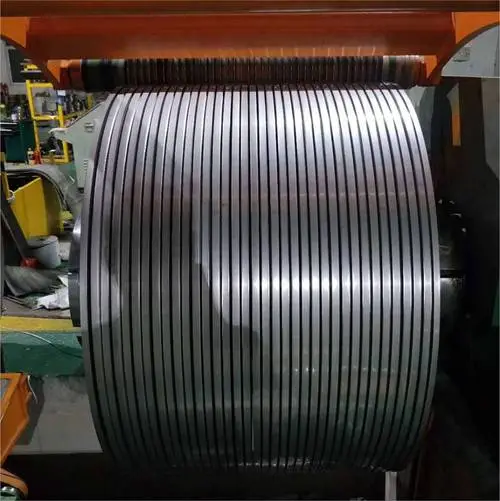Stainless Steel Rolls: Everything You Should Know
Steel undergoes different processes before manufacturers release them to the market. Within these processes, machines shape or draw steel into desired forms to suit applications. Stainless steel rolls are among these forms, which are in demand for a variety of purposes.
Myriad is among the leading industry experts who produce stainless steel rolls. We are your reliable source of products and information about anything stainless steel. Proceed reading and learn everything you need to know about stainless steel rolls.

Get BEST Stainless Steel Products From China
304 Stainless Steel Coil
301 Stainless Steel Coil
316 Stainless Steel Coil
304L Stainless Steel Coil
Material Testing After You Place An Ss Roll Order
Hardness Testing
Ingredient detection
Tensile Strength Test
Packaging Of Stainless Steel Roll
Table of Contents
What Are Stainless Steel Rolls?
Stainless steel rolls are stainless steel that underwent ‘rolling.’ Rolling pertains to steel processing, which involves flattening raw steel into uniform thickness. And depending upon the demand, rolled steel can come with varying thickness and dimensions. Furthermore, rolling can entail multiple processes, and depending on your requirements; you may have to pick what is more viable.
Stainless strips, coils, and foils are some of the many types of rolled steel available at Yaoyi. We have an array of quality stainless steel products based on the popular market grades. Thus, you have plenty of options to suit your needs.
AISI 301 Equivalent: Components, Processing, and Applications
You can get the most cost-effective 300-series stainless steel materials from Yaoyi.
Contact us to get the free sample or customize the stainless steel rolls.
How Can I Tell if a Steel Roll Is Stainless?
The foolproof method of verifying whether steel is stainless is through laboratory testing. But, this method is very impractical and would only be applicable for special cases. Of course, you would not want to walk to steel shops with lab professionals and equipment to verify this. And this should not be the case because there are other verification methods at disposal.
For the sake of practicality, here are some factors you can conduct to verify a stainless steel roll:
1. Appearance and Texture
A smooth and mildly lustrous surface characterizes typical marketed stainless steel rolls. This appearance is in demand for both functionality and aesthetics. Smoother surfaces prevent entraining of airborne substances, which prolongs their quality. Furthermore, it has a distinct appearance that may fit aesthetical requirements.
Yet, keep in mind that the surface finish of stainless steel rolls can have variations. Matte finishes do exist, although rarely preferred because it eliminates the benefits mentioned. Thus, checking your roll’s appearance can still be a reliable first filter in verifying its make.
2. Corrosion Resistance
Corrosion resistance is the most desired property of stainless steel. Stainless steel has around 10.50% Chromium content which resists rust than regular carbon steel does not. Due to this fact, stainless steel products will not rust under typical environmental conditions. Thus, patches of rust on a steel roll disqualifies it as ‘stainless.’
3. Magnetic Properties
Most stainless steel grades are austenitic. A basic non-magnetic form characterizes austenitic steels due to their chromium-nickel compound. Thus, you can expect a stainless steel roll to have relatively low or non-existent magnetization. However, some cases exempt the possibility of this checking.
One example of this exemption is cold-worked rolls which may have undergone or contacted magnetization. Another is a specific grade of stainless steel, which is the 400 series. This stainless steel series has an absence of nickel which turns its structure into ferritic. Thus, becoming a ferritic structure means having the same magnetic capabilities as regular carbon steel has.
These are just a few of the techniques you can apply in checking your stainless. Few more factors can affect the property and appearance of stainless steel rolls. And among these factors include the type of rolling the manufacturers used.
AISI 301 Properties: Characteristics, Compounds, and Applications
Hot Rolled vs. Cold Rolled Stainless Steel
The process of rolling has two types which are hot rolled and cold rolled. And, as you might have guessed, the main difference between them lies within the temperature of their processing. Both methods have their respective advantages and considerations. Thus, being familiarized with these present options on your use.
Hot Rolled Stainless Steel
Hot rolled steel undergoes rolling within temperatures above recrystallization temperature. This includes heat thresholds above 1,700˚F while conducting the rolling or pressing process. By using this method, steel is formed easier and has increased workability.
The process of hot-rolling starts with a raw steel slab called a billet. This billet is subjected to the required heat and is then roll-flattened through a series of machinery. This rolling process is conducted until the desired dimensions are achieved. Afterward, the rolls are prepared into coils which are then allowed to cool down.
During this cooldown phase, steel shrinks a bit differently from the original shape. Thus, there will be variations in the final dimensions. This condition makes hot-rolled stainless steel rolls unlikely to be used for high-precision applications. Hot-rolled stainless steel is often recommended for less constringent works.
Appearance
The process of hot-rolling leaves certain effects which make it distinguishable from other methods. These are among the features a hot rolled-stainless steel roll has:
1. Surface scales are apparent due to cooling from extremely high temperatures
2. Rounded edges and corners due to cooling shrinkage along with minute dimensional variations
When To Use Hot Rolled Stainless Steel?

Hot-rolled stainless steel is for applications wherein dimensional variations are tolerable, and the same goes for aesthetics. However, there are plenty of processes that can help remove surface scaling if need be. On a similar aspect, descaled surfaces allow better surface adhesion for post painting or coatings.
Furthermore, since this method requires less processing and machinery, hot-rolled steels are cheaper than cold-rolled ones. Also, fewer machinery and hot working mean lesser internal stress risks for the product.
What Are SS Rolls Used for?
Stainless steel rolls are generally ideal as a protective component due to their excellent durability and resistance. Other products also include structurally feasible materials such as flat bars, tubes and others. Grades 304 and 316 are among the most prominent variants in the market.
These grades have respective properties excelling for different applications. Thus, it is worth checking to verify your possible material options.
Grade 304
Stainless steel rolls from 304 are the most common, and it dominates applications where decent resistance and durability are needed. It is practically the benchmark for the standard performance of stainless steel.
Common applications of 304 stainless steel rolls include:
- Kitchenware and equipment
- Chemical containers
- Components in appliances
- Structures for rust inducing or weather-exposed areas
- Stainless steel piping
- Heat exchangers
Grade 316
Meanwhile, 316 stainless steel rolls specialize for better resistive properties. It is often called a ‘marine grade’ steel due to its use for most marine applications. The higher resistance property is because of higher molybdenum content. 316 generally has around 2-3% molybdenum content which is drastically higher than only minimal traces other grades have.
Typical applications of 316 stainless steel rolls are as follows:
- Food processing equipment
- Chemical processing or laboratory equipment
- Coastal architecture finishes and marine applications
- Aquatic vessel components
- Springs
- Pharmaceutical and medical equipment
- Textile industry equipment
It might get confusing since some applications of the two grades can overlap. However, as a rule of thumb, if your application demands better corrosion resistance, then 316 should be your choice. 316 excels with anything that has to do with chloride pitting and deterioration prevalent in marine environments.
Otherwise, if it will be more of general use, then go with grade 304. In terms of costs, 304 is also cheaper than 316. Furthermore, 304 excels on some aspects like temperature thresholds which might be ideal for some situations.
Yaoyi manufactures both grade 304 and 316, along with products made of these. You may check our website for more information and details relating to these grades.
AISI 304 2B: One Of The Most Commonly Used Stainless Steel
Conclusion
Every material has its different advantages and drawbacks, and the same goes for stainless steel rolls. Depending on your applications, there are considerations you have to take to maximize its use. Thus, we value informing you of everything related to stainless steel rolls. Doing so allows you to check your options and prevent unnecessary loss of resources and time.
If you need further assistance with stainless steel products like steel rolls, feel free to contact us. Yaoyi will gladly offer our expertise to assist you. We are your top steel manufacturer, delivering only the best service and product.
BEST 304 Stainless Steel Products in China
